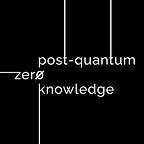So what is Near Crowd? NEAR Crowd is a service that allows people earn Ⓝ NEAR tokens by completing small tasks.
The uniqueness of NEAR Crowd is that it is the community that decides if each task is done correctly. It does this by creating a set of rules, checks and balances that are enforced by a smart contract deployed on NEAR.
How it works?
We will explore how NEAR Crowd works with a simple example.
The customer needs to describe what is in the image. Five participants: Sabrina, John, Jessica, Kim and Carnelia have applied for the assignment.
Sabrina first applies for the assignment and receives one of the images. She describes the image and submits the completed task. John applies for the task following Sabrina submission.
John can receive either Sabrina’s completed quest or a new description quest. For example, John receives a completed assignment from Sabrina. He looks at the picture and confirms the description is correct and accepts it. Once accepted, Sabrina and John will receive credit for it.
Sabrina applies for another task, receives another image, and submits its description. John does too, but he makes a mistake in doing the description. There are currently two descriptions awaiting consideration: Sabrina, correctly executed, and John, incorrectly executed.
Jessica submits an assignment and receives Sabrina’s description for review. Kim also applies for the mission and receives John’s transcript for review. Kim confirms that John’s Description is incorrect and rejects her. Jessica, not interested in following protocol, decides not to check Sabrina’s description at all, and also rejects her.
Since both descriptions were rejected, both are automatically challenged. When a problem is contested, it is passed on to three more participants for consideration, and most of them give the final verdict: if at least two of them accept the task, it is accepted, and if at least two of them reject it, it is rejected.
In our example, the task that Sabrina completed and was rejected by Eve is assigned to John, Jessica, and Daryl. They all accept it. Sabrina, John, Jessica and Daryl receive appropriate rewards for completing the assignment, while Carnelia receives a negative rating.
For a task completed by John and rejected by Kim, it is forwarded to Sabrina, Jessica, and Eve for further consideration. Sabrina and Jessica confirm John was wrong and reject the description. Carnelia, deciding not to follow the protocol any longer, accepts it. As more participants rejected the description than accepted, Daryl, the original reviewer, and Sabrina and Jessica receive corresponding awards, and John and Carnelia receive negative ratings.
Honeypots
We expect most tasks to complete correctly during normal operation. Thus, when John receives another tip after an hour of work, he is tempted to immediately accept it without paying close attention: the chances that the task will not be completed correctly are rather small.
To keep John alert, the requester made several of his 100 tasks as so-called decoys. When Alice submits a request for a new problem, she receives a decoy problem: she is asked to deliberately make an incorrect description. She listens to the clip and, decrypting it, swaps the two words in the middle before submitting her work.
Later, John gets a description of Alice to look at and immediately accepts her, expecting that she probably did the right thing.
For decoy tasks, the call condition is reversed: acceptance of the description results in an immediate call. As John has accepted the description, the task is disputed and passed on to Jessica, Kim, and Carnelia. They all notice a deliberate mistake made by Alice and reject her. As a result, Alice receives an award for making good bait, which is ultimately rejected, as did Jessica, Kim, and Carnelia for being vigilant and rejecting bait. John gets a negative rating.
Language
At the moment nir krode has branches of different languages: English, Russia, Hindi.
Rewards
For each correct description of an image you will usually receive 0.1 NEAR. For checking the description of another performer, you will receive 0.05 NEAR.
Withdrawing the rewards
After a participant has completed at least 20 tasks, they can withdraw their rewards to their NEAR wallet until they show at least 85% success.
In particular, the system maintains the number of successful and unsuccessful tasks for each participant. To withdraw funds, the number of successful tasks must be at least 8.5 times greater than the number of unsuccessful ones.
Before starting the tasks, you can familiarize yourself with the tutorial (examples of tasks will be shown there).
How to start?
First, you need to create a wallet (If you don’t have it yet).
Second, you need to go to NEAR Crowd, make a login and buy an invite (or ask in a TG group).
Next, you will see the tutorial, read everything carefully and you can start!
In conclusion, it is worth reiterating that after the requester has funded the task, all the other rules listed above are applied using a smart contract. This way, the member can be confident that as long as they get the job done right and the community accepts it, they will eventually receive their payment.
This is in stark contrast to centralized systems where the requester usually has the final say in accepting work, and situations in which the requester walks away with the results of the work without paying remuneration are quite common.
